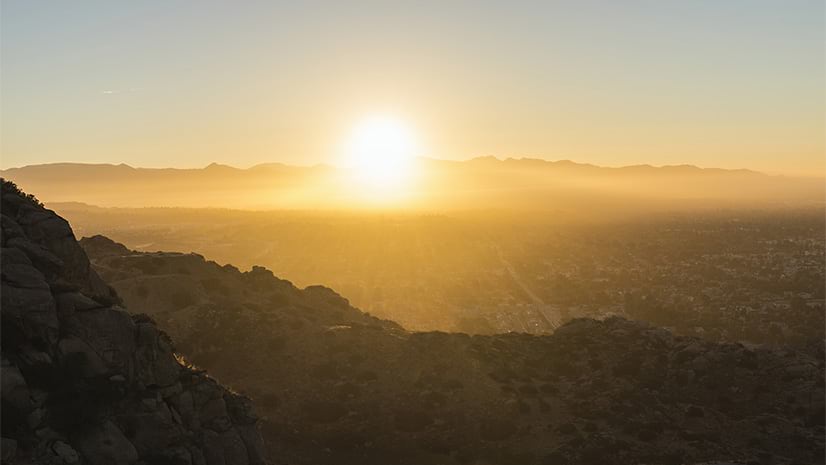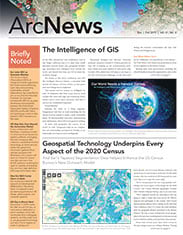The State of Michigan is a leader in technology use. In the latest Digital States Survey, conducted by the Center for Digital Government, Michigan landed a top-five showing, thanks, in part, to its innovative imagery strategy. The Michigan Imagery Solution (MIS) is a cloud hosted repository of imagery that’s fed by the Michigan Statewide Authoritative Imagery & LiDAR (MiSAIL) program, which captures fresh imagery and elevation data for the state on a five-year revolving basis.

An important aspect of MiSAIL is that the state and counties participating in it share the imagery acquisition fees. This has saved Michigan $3 million, which contributed to its receiving the survey’s prestigious A grade. But while this figure is a compelling return on investment, it’s not the whole story. It doesn’t include the time and money the state saves on server maintenance. It doesn’t reveal the added insights gained from having up-to-date imagery, or the time saved by streaming imagery as a service rather than having to find the latest image on a server. It’s also hard to put a dollar figure on how beneficial the new levels of cross-governmental collaboration are.
“We have a strong history of a statewide approach to geospatial data sharing in Michigan, going back to the Michigan Geographic Framework we released in 2001,” said Everett Root, outreach specialist at the State of Michigan’s Office of Technology Partnerships. “The idea has always been to make more data open and shared across the state.”
Michigan’s collaborative imagery collection began slowly, at the project scale, before becoming a state program.
“Sharing imagery costs with counties started in 2005 with some of the better-resourced counties [that have] higher populations,” Root said. “In 2009, when many of the same counties were getting ready to fly again, we found that we only had imagery for 40 of our 83 counties. Rather than just refresh imagery with past partners, we set up a statewide imagery program designed to collect imagery for 20 percent of the state each year.”
Constant Collection Despite—and Because of—Clouds
Every spring, Michigan’s contracted imagery provider collects imagery for the year’s quota of counties. The state specifies that imagery must be collected when deciduous trees are free of leaves, the ground is free of snow cover, lakes are free of ice, rivers and streams are within their normal banks, and the ground is unobscured by fog.
“These are the usual imagery capture standards, but in Michigan, there aren’t many days in the year when all of this happens,” said Root. “We’ll start with some snow and ice on the ground if we have to.”
The parameters prove particularly tough on Michigan’s Upper Peninsula, which can get more than 300 inches of snow per season. Oftentimes, a compromise must be made, since many areas still have snow on the ground when leaves start to emerge on trees.
“The Great Lakes can also be challenging,” added Root. “We can be in the air by 10 a.m., and by noon, clouds start rolling in off the lake and we’re done for the day.”

Although these kinds of vaporous clouds can make imagery collection difficult, the state still amasses a lot of imagery, which is where its technological cloud comes in.
“We had Michigan State University hosting our aerial photography since 2011, but that was just one server that needed memory and software upgrades, and we had just one failover server without any load balancing,” explained Root.
Having to incorporate data from 2005 meant that the data volume became overwhelming pretty quickly. So to make data storage and sharing efficient, Michigan’s Department of Technology, Management and Budget (DTMB) instituted a cloud-first provision in the Michigan Digital Strategy.
“The cloud made good sense for the sheer amount of data [the state was collecting],” said Mark Holmes, the geospatial services manager for DTMB.
“The move to Esri Managed Cloud Services provided an opportunity to apply best practices—managing users, setting up accounts, and providing streaming services for access in a cloud-based way,” continued Root.
The MIS was one of the first projects to use Esri Managed Cloud Services to host and serve imagery and lidar data, porting more than 25 terabytes of imagery at the start in 2016. That data volume has now more than doubled.
Bartering Imagery for GIS Data
As part of the imagery acquisition program MiSAIL, the state launched an innovative initiative in 2017 to exchange its 12-inch-resolution imagery for authoritative GIS data from counties and local governments—without funds changing hands.
“A lot of counties jumped right on that offer, and we’ve been working on creating partnerships, getting agreements in place, and transferring data,” said Root.
Bringing in local, authoritative GIS data to inform programs across all divisions at the state level benefits both state and local objectives. Counties provide property boundaries, associated assessment data, address points, and road centerline data, and in exchange, they receive fresh imagery from the state.
“Some counties have never had aerial imagery before, and we gain local, authoritative GIS data,” Root said. “Everyone benefits.”
While the state requires imagery capture at 12-inch resolution, local partners in this program can “buy up” and increase it to 6-inch or 3-inch resolution for areas of 10 square miles or more. This simply requires the imagery capture company to fly at the appropriate altitude and flight line spacing.
“It’s a very affordable way for counties and local governments to get high-resolution imagery of their entire county or just their urban areas,” Root said.

DTMB’s online imagery streaming service provides an added incentive from the state. When a county signs up to partner in the exchange program, in addition to receiving the latest imagery in an offline format that it can import into its own GIS, the county receives accounts for the image service. The image service allows it to stream all the imagery the state has, beyond just the latest. And the imagery tiles are served in three visible bands, as well as near-infrared.
Many people—including archivists, archaeologists, and environmental engineers—are excited about the ability to see how land use has changed for specific sites over the decades.
Data Users, and Uses, Keep Increasing
Streaming imagery can be delivered to both desktop users and users of configured apps. State and local government departments have built a large variety of apps to take advantage of the imagery input.
In addition, many departments throughout the state have employed the imagery to meet specific mandates.
The Michigan Department of Transportation (MDOT) pioneered much of the state’s data sharing based on its need for imagery to verify a road’s existence and to capture new roads. In fact, it was MDOT that kicked off the initial cost-sharing initiative with counties.
The Michigan Department of Environment, Great Lakes, and Energy (EGLE) administers a program that promotes shoreline protection to reduce erosion. Imagery provides a view of past outcomes to help EGLE recommend proper practices that minimize the effects of waves and ice on shoreline loss.
The Michigan Department of Natural Resources (MDNR) uses the imagery for forest inventory and to advise commercial foresters and private forest owners on practices that balance long-term timber production and the preservation of environmentally significant forestlands. The near-infrared imagery helps foresters detect tree species, vegetation health, and indicators of disease and forest pests. Imagery also forms an important backdrop for MDNR’s Mi-HUNT app, which helps hunters find public hunting land.
For the Michigan State Police, imagery provides an important input to enhance situational awareness. The department relies on state-derived imagery to furnish a “before” picture that it compares to mission-specific imagery it captures from helicopters.
With so many uses—and so much more data coming online—the number of MiSAIL accounts continues to climb.
“We have a constant increase in users and use of the data,” said Root. “The most common reaction from new users is from those who have never seen high-resolution imagery and are instead used to looking at images that are free and available online. Looking at leaf-off imagery with a good resolution really allows you to see what was going on, on the ground at that time.”

